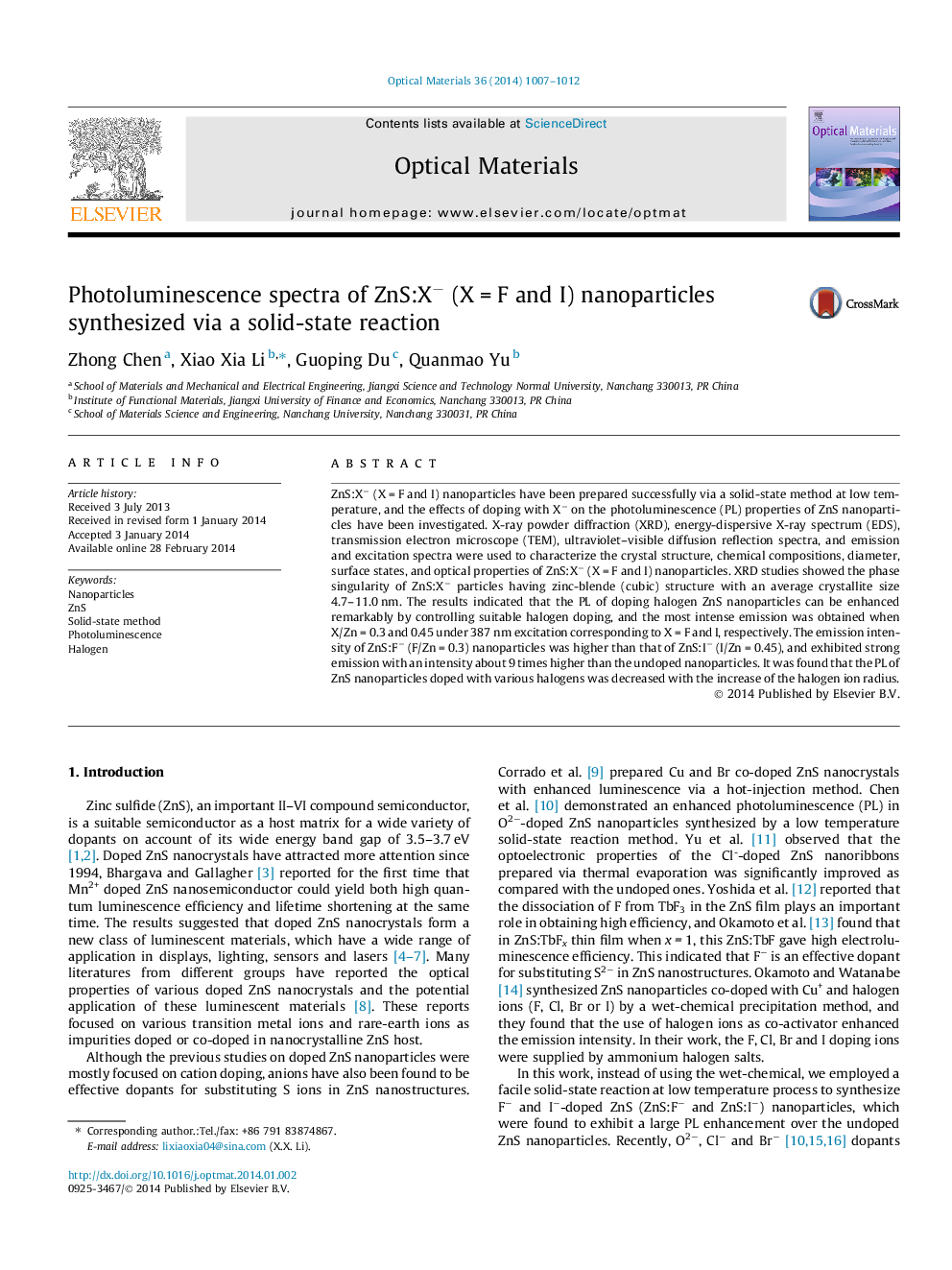| Article ID | Journal | Published Year | Pages | File Type |
|---|---|---|---|---|
| 10632984 | Optical Materials | 2014 | 6 Pages |
Abstract
ZnS:Xâ (X = F and I) nanoparticles have been prepared successfully via a solid-state method at low temperature, and the effects of doping with Xâ on the photoluminescence (PL) properties of ZnS nanoparticles have been investigated. X-ray powder diffraction (XRD), energy-dispersive X-ray spectrum (EDS), transmission electron microscope (TEM), ultraviolet-visible diffusion reflection spectra, and emission and excitation spectra were used to characterize the crystal structure, chemical compositions, diameter, surface states, and optical properties of ZnS:Xâ (X = F and I) nanoparticles. XRD studies showed the phase singularity of ZnS:Xâ particles having zinc-blende (cubic) structure with an average crystallite size 4.7-11.0 nm. The results indicated that the PL of doping halogen ZnS nanoparticles can be enhanced remarkably by controlling suitable halogen doping, and the most intense emission was obtained when X/Zn = 0.3 and 0.45 under 387 nm excitation corresponding to X = F and I, respectively. The emission intensity of ZnS:Fâ (F/Zn = 0.3) nanoparticles was higher than that of ZnS:Iâ (I/Zn = 0.45), and exhibited strong emission with an intensity about 9 times higher than the undoped nanoparticles. It was found that the PL of ZnS nanoparticles doped with various halogens was decreased with the increase of the halogen ion radius.
Related Topics
Physical Sciences and Engineering
Materials Science
Ceramics and Composites
Authors
Zhong Chen, Xiao Xia Li, Guoping Du, Quanmao Yu,
